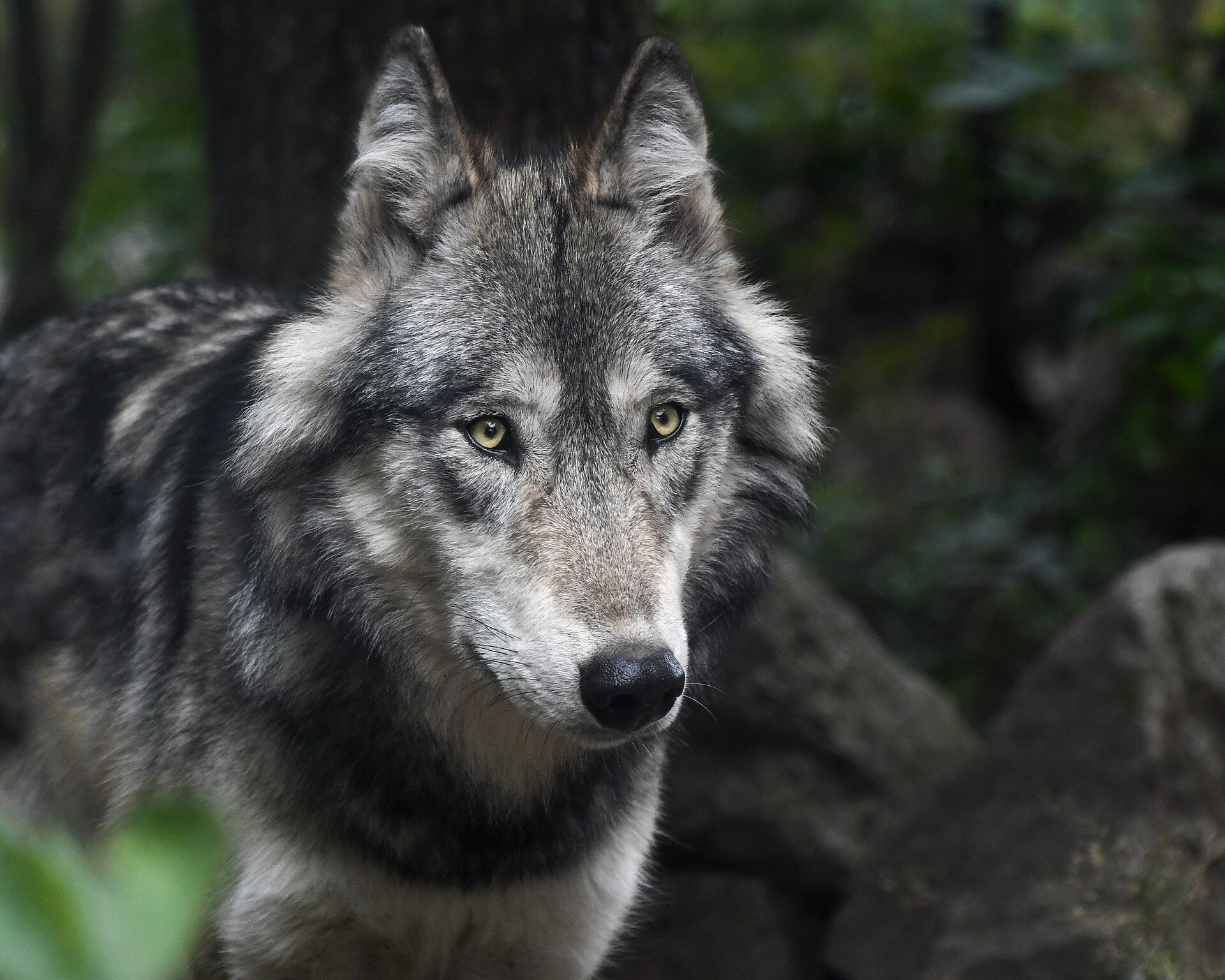Northern Rocky Mountain Wolves Get Another Shot at Protections – Center for Biological Diversity

Federal Court Mandates Reconsideration of Gray Wolf Protections in Northern Rockies
Introduction
A United States federal court has ruled that the U.S. Fish and Wildlife Service (FWS) acted unlawfully in its 2023 denial of a petition to reinstate protections for gray wolves under the Endangered Species Act (ESA). This ruling compels the agency to re-evaluate the conservation status of wolf populations in Idaho, Montana, Wyoming, and parts of Washington, Oregon, and Utah. The decision represents a significant development in the ongoing effort to align national wildlife management with key tenets of the United Nations’ Sustainable Development Goals, particularly SDG 15 (Life on Land), which calls for halting biodiversity loss and protecting threatened species.
Judicial Findings and Implications for Sustainable Development Goal 16
The court’s decision underscores the importance of robust legal frameworks and accountable institutions, principles central to SDG 16 (Peace, Justice and Strong Institutions). By holding a federal agency accountable to its statutory duties under the ESA, the ruling reinforces the rule of law in environmental governance.
Legal Deficiencies in the FWS Decision
U.S. District Judge Donald Molloy identified critical flaws in the FWS’s rationale for denying the petition. The key findings include:
- Failure to Consider Historic Range: The court found that the FWS unlawfully disregarded the potential for wolf recovery in significant portions of their historic range, particularly the southern Rocky Mountains, which includes Colorado, Utah, northern New Mexico, and northern Arizona. This narrow view of recovery was deemed inconsistent with the requirements of the ESA.
- Disregard for New Populations: The agency was faulted for unlawfully ignoring the importance of fledgling wolf populations returning to Colorado through both natural dispersal and reintroduction efforts.
Mandated Re-evaluation
As a result of the ruling, the FWS’s denial of the petition has been vacated. The agency is now legally required to conduct a new review to determine if federal protections are warranted for the Northern Rockies wolf population. The FWS has a 60-day period to appeal the court’s decision.
State-Level Management Practices and Biodiversity Concerns (SDG 15)
The original petition was submitted in response to escalating aggressive management policies in several states, which petitioners argue are detrimental to the long-term survival of wolf populations and undermine SDG Target 15.5 (reduce the degradation of natural habitats and halt the loss of biodiversity). These policies conflict with the wolves’ ecological role as a keystone species.
State-Specific Policies of Concern
- Idaho: State law permits the hiring of private contractors for wolf culling, allows for the purchase of unlimited wolf-killing tags, and authorizes hunting methods such as pursuit with hounds and all-terrain vehicles. The state also allows for bounty systems disguised as “reimbursements.”
- Montana: The state permits the use of bait and strangulation snares. Proposed regulations could allow a single individual to kill up to 15 wolves and trap an additional 15.
- Wyoming: Across most of the state, wolves are classified as “predatory animals,” allowing them to be killed at any time without a license and by nearly any method. This has resulted in the killing of wolves near the Colorado border, threatening recovery efforts in that state.
Civil Society Partnership and Advocacy for Environmental Governance (SDG 17)
The legal challenge was initiated through a multi-stakeholder partnership, exemplifying SDG 17 (Partnerships for the Goals), which promotes collaboration among civil society to achieve sustainable development objectives.
The Petitioning Coalition
The lawsuit was filed by a coalition of conservation and animal protection organizations that authored the 2021 petition:
- Center for Biological Diversity
- Humane World for Animals
- Humane World Action Fund
- Sierra Club
Advocacy for Ecosystem Integrity
The coalition contends that federal oversight is essential for the true recovery of gray wolves, arguing that state management has proven inadequate to ensure their survival and ecological function. The successful legal action demonstrates how civil society partnerships can leverage legal systems (SDG 16) to advocate for the protection of biodiversity and ecosystem health (SDG 15), ensuring that national policies are aligned with broader conservation imperatives.
Analysis of Sustainable Development Goals (SDGs) in the Article
1. Which SDGs are addressed or connected to the issues highlighted in the article?
The article primarily addresses issues related to two Sustainable Development Goals:
- SDG 15: Life on Land – This goal is central to the article, which focuses on the legal battle to protect a specific terrestrial species, the gray wolf, and preserve its role within its ecosystem. The entire narrative revolves around conservation efforts, threats to biodiversity from human activities, and the importance of species protection for ecosystem health.
- SDG 16: Peace, Justice and Strong Institutions – This goal is addressed through the article’s focus on the legal framework and institutional accountability. The story details how conservation groups are using the judicial system to challenge a government agency’s decision and enforce environmental law (the Endangered Species Act). It highlights the role of strong, transparent, and accountable institutions in upholding the rule of law for environmental protection.
2. What specific targets under those SDGs can be identified based on the article’s content?
Based on the article’s content, the following specific targets can be identified:
SDG 15: Life on Land
- Target 15.5: “Take urgent and significant action to reduce the degradation of natural habitats, halt the loss of biodiversity and, by 2020, protect and prevent the extinction of threatened species.”
- Explanation: The article is fundamentally about protecting a threatened species. The lawsuit aims to restore protections under the Endangered Species Act to prevent the gray wolf population from declining due to “killing campaigns that pushed them to the brink of extinction.” The call for “true recovery for wolves across the West” directly aligns with this target’s goal of protecting threatened species and halting biodiversity loss.
- Target 15.7: “Take urgent action to end poaching and trafficking of protected species of flora and fauna and address both demand and supply of illegal wildlife products.”
- Explanation: While the wolf killings described in Idaho, Montana, and Wyoming are currently legal under state law, they would be considered illegal poaching if federal protections were restored. The article describes methods like “bounties,” “unlimited wolf-killing tags,” and killing wolves “without a license in nearly any manner at any time.” The lawsuit seeks to invoke a higher federal law to end these state-sanctioned killings, which aligns with the spirit of ending the unregulated killing of a protected species.
SDG 16: Peace, Justice and Strong Institutions
- Target 16.3: “Promote the rule of law at the national and international levels and ensure equal access to justice for all.”
- Explanation: The article is a clear example of this target in action. Conservation groups filed a lawsuit, and a “federal judge in Montana ruled… that the U.S. Fish and Wildlife Service broke the law.” This demonstrates the use of the legal system to uphold the “rule of law” (specifically, the Endangered Species Act) and ensure that government actions are lawful.
- Target 16.6: “Develop effective, accountable and transparent institutions at all levels.”
- Explanation: The lawsuit holds the U.S. Fish and Wildlife Service, a federal institution, accountable for its decisions. The court found that the agency’s “unambitious view of recovery violates the Endangered Species Act” and that it “unlawfully disregarded” key factors. The ruling forces the agency to be accountable by making it “reconsider whether to grant protections to wolves,” thereby promoting a more transparent and accountable decision-making process.
3. Are there any indicators mentioned or implied in the article that can be used to measure progress towards the identified targets?
The article implies several indicators that can be used to measure progress:
For SDG 15 Targets:
- Indicator for Target 15.5: The conservation status of the gray wolf.
- Explanation: The central conflict is whether gray wolves should be protected under the Endangered Species Act. The outcome of the agency’s reconsideration—whether the wolves are relisted as a threatened or endangered species—serves as a direct indicator of their protection status. The article mentions the goal of “true recovery for wolves,” which implies tracking their population and range expansion into historic habitats like the “vast southern Rockies.”
- Indicator for Target 15.7: The existence and enforcement of laws regulating the killing of wolves.
- Explanation: The article details state laws in Idaho, Montana, and Wyoming that permit widespread killing of wolves. A measure of progress would be the overturning or amendment of these state laws or their supersedence by federal protections. The reinstatement of federal protection under the Endangered Species Act would be a key indicator that action is being taken to end the unregulated killing of this species.
For SDG 16 Targets:
- Indicator for Target 16.3: The outcome of legal challenges against government environmental decisions.
- Explanation: The “ruling” from the federal judge is a concrete indicator. The fact that the court “vacates the Service’s denial of the petition” shows that the judicial system is functioning to enforce the law. The number and success rate of such lawsuits can serve as a measure of access to justice for enforcing environmental regulations.
- Indicator for Target 16.6: The responsiveness of government agencies to judicial oversight.
- Explanation: The court has ordered the U.S. Fish and Wildlife Service to “reconsider its response.” The agency’s subsequent actions—whether it appeals the decision or undertakes a new, lawful review as mandated—will be a direct indicator of its accountability and transparency. The article notes the agency “has 60 days to appeal,” setting a clear timeline for measuring this institutional response.
4. Summary Table of SDGs, Targets, and Indicators
| SDGs | Targets | Indicators Identified in the Article |
|---|---|---|
| SDG 15: Life on Land | 15.5: Protect and prevent the extinction of threatened species. | The legal and conservation status of the gray wolf (i.e., whether it is listed under the Endangered Species Act). |
| 15.7: Take urgent action to end poaching and trafficking of protected species. | The existence and enforcement of federal laws to supersede state laws that permit bounties, unlimited tags, and unregulated killing of wolves. | |
| SDG 16: Peace, Justice and Strong Institutions | 16.3: Promote the rule of law and ensure equal access to justice. | The successful court ruling where a judge found that a government agency “broke the law,” demonstrating the functioning of the justice system to enforce environmental law. |
| 16.6: Develop effective, accountable and transparent institutions. | The mandated reconsideration of the petition by the U.S. Fish and Wildlife Service, which serves as a measure of the agency’s accountability to the law and judicial oversight. |
Source: biologicaldiversity.org

What is Your Reaction?
 Like
0
Like
0
 Dislike
0
Dislike
0
 Love
0
Love
0
 Funny
0
Funny
0
 Angry
0
Angry
0
 Sad
0
Sad
0
 Wow
0
Wow
0
























;Resize=805#)






















































